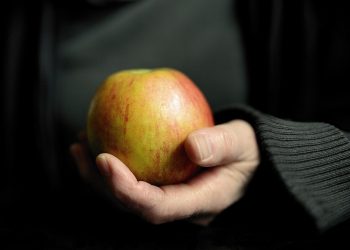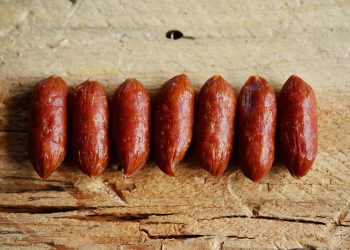Intermittent fasting (IF) is a popular eating pattern that cycles between periods of eating and voluntary fasting on a regular schedule. It’s not a diet in the traditional sense, but rather a timed approach to eating. For beginners, understanding the basics and planning easy, nutritious meals is key to success. This guide will walk you through simple meal ideas and strategies to make intermittent fasting manageable and sustainable.
Understanding Intermittent Fasting
Before diving into meal ideas, let’s quickly recap the most common intermittent fasting methods:
- 16/8 Method: This involves fasting for 16 hours and eating all your meals within an 8-hour window. It’s often considered the most beginner-friendly.
- 5:2 Diet: You eat normally for 5 days of the week and restrict your calorie intake to around 500-600 calories on the other 2 non-consecutive days.
- Eat-Stop-Eat: This involves a 24-hour fast once or twice a week. This method is more advanced and not generally recommended for beginners.
For the purpose of this article, we’ll primarily focus on the 16/8 method, as it’s the most popular and easiest to incorporate into a busy lifestyle.
Planning Your Eating Window
The beauty of intermittent fasting is its flexibility. You can adjust your eating window to fit your schedule. For example, if you prefer eating between noon and 8 pm, that’s perfectly fine. Experiment to find what works best for you. Consider your work schedule, social life, and when you’re most hungry.
Essential Meal Planning Tips for Beginners
Here are some key tips to keep in mind when planning your intermittent fasting meals:
- Prioritize Whole Foods: Focus on unprocessed foods like fruits, vegetables, lean proteins, and whole grains.
- Stay Hydrated: Drink plenty of water, unsweetened tea, or black coffee during your fasting period. This helps curb hunger and keeps you energized.
- Plan Ahead: Spend some time each week planning your meals. This will help you avoid impulsive, unhealthy choices.
- Listen to Your Body: Pay attention to your hunger cues and adjust your eating window as needed.
- Be Patient: It takes time for your body to adjust to intermittent fasting. Don’t get discouraged if you don’t see results immediately.
Easy Intermittent Fasting Meal Ideas
Here are some simple and delicious meal ideas that are perfect for beginners. These meals are designed to be nutritious, satisfying, and easy to prepare.
Breakfast (or First Meal) Ideas
If your eating window starts in the morning, here are some healthy and filling breakfast options:
- Oatmeal with Berries and Nuts: Oatmeal is a great source of fiber, which will keep you feeling full and satisfied. Add berries for antioxidants and nuts for healthy fats.
Example: 1/2 cup rolled oats cooked with water or milk, topped with 1/2 cup mixed berries and 1/4 cup chopped almonds.
- Greek Yogurt with Fruit and Granola: Greek yogurt is packed with protein, which is essential for muscle building and satiety.
Example: 1 cup plain Greek yogurt topped with 1/2 cup fruit (like bananas or peaches) and 1/4 cup granola (choose a low-sugar variety).
- Scrambled Eggs with Whole Wheat Toast and Avocado: Eggs are a complete protein source, and whole wheat toast provides complex carbohydrates for sustained energy. Avocado adds healthy fats and creamy texture.
Example: 2 scrambled eggs with 1 slice whole wheat toast and 1/4 avocado.
- Protein Smoothie: A quick and easy option, especially when you’re short on time.
Example: Blend 1 scoop protein powder, 1/2 cup frozen fruit, 1 cup spinach, 1 tablespoon chia seeds, and 1 cup water or almond milk.
Lunch Ideas
Lunch should be a balanced meal that provides you with energy and nutrients to power through the afternoon.
- Salad with Grilled Chicken or Fish: A large salad is a great way to get your vegetables and protein.
Example: Mixed greens topped with 4 oz grilled chicken breast or salmon, 1/2 cup cherry tomatoes, 1/4 cup cucumber, 1/4 cup bell peppers, and a light vinaigrette dressing.
- Leftovers from Dinner: Save time and effort by eating leftovers from the previous night’s dinner.
Example: Chicken stir-fry with brown rice or lentil soup.
- Tuna Salad Sandwich on Whole Wheat Bread: Tuna is a good source of protein and omega-3 fatty acids.
Example: Tuna salad made with 5 oz canned tuna (in water), 2 tablespoons light mayonnaise, celery, and onion, served on 2 slices whole wheat bread.
- Quinoa Bowl with Roasted Vegetables: Quinoa is a complete protein source and a great alternative to rice.
Example: 1 cup cooked quinoa topped with 1 cup roasted vegetables (such as broccoli, carrots, and sweet potatoes) and a sprinkle of feta cheese.
Dinner Ideas
Dinner should be a satisfying and nourishing meal that helps you wind down for the evening.
- Baked Salmon with Roasted Vegetables: Salmon is rich in omega-3 fatty acids, and roasted vegetables are a great source of vitamins and minerals.
Example: 4 oz baked salmon with 1 cup roasted broccoli, carrots, and Brussels sprouts.
- Chicken Stir-Fry with Brown Rice: A quick and easy meal that’s packed with protein and vegetables.
Example: Chicken stir-fry with 4 oz chicken breast, 1 cup mixed vegetables (such as broccoli, peppers, and onions), and 1/2 cup cooked brown rice.
- Lentil Soup with Whole Wheat Bread: Lentil soup is a hearty and filling meal that’s high in fiber and protein.
Example: 1.5 cup lentil soup with 1 slice whole wheat bread.
- Turkey Meatloaf with Mashed Sweet Potatoes: A healthier twist on a classic comfort food.
Example: 4 oz turkey meatloaf with 1/2 cup mashed sweet potatoes.
Snack Ideas (if needed)
While you want to avoid constant snacking, if you feel particularly hungry during your eating window, here are some healthy snack options:
- A handful of nuts: Almonds, walnuts, or cashews are a good source of healthy fats and protein.
- A piece of fruit: An apple, banana, or orange provides vitamins, minerals, and fiber.
- Hard-boiled egg: A great source of protein.
- Vegetables with hummus: Carrots, celery, or bell peppers with hummus are a healthy and satisfying snack.
- Greek yogurt: Plain Greek yogurt is packed with protein. Add berries or a drizzle of honey for flavor.
Sample 16/8 Intermittent Fasting Meal Plan
Here’s a sample meal plan to give you an idea of how to structure your eating window:
Eating Window: 12 pm – 8 pm
- 12:00 pm: Lunch – Salad with grilled chicken or fish.
- 3:00 pm: Snack (optional) – Handful of almonds.
- 6:00 pm: Dinner – Baked Salmon with Roasted Vegetables.
Remember that this is just an example, and you can adjust the timing and meal choices to fit your own preferences and schedule.
Foods to Focus on and Foods to Limit
Focus On:
- Lean Proteins: Chicken, fish, turkey, beans, lentils, tofu.
- Healthy Fats: Avocado, nuts, seeds, olive oil.
- Complex Carbohydrates: Whole grains (oats, quinoa, brown rice), fruits, vegetables.
- Fiber-Rich Foods: Vegetables, fruits, whole grains, beans, lentils.
Limit:
- Processed Foods: Packaged snacks, sugary drinks, fast food.
- Sugary Drinks: Soda, juice, sweetened tea.
- Refined Grains: White bread, white rice, pastries.
- Excessive Alcohol: While moderate alcohol consumption may be acceptable for some, it’s best to limit it, especially when starting intermittent fasting.
Staying Hydrated During Intermittent Fasting
Hydration is crucial during intermittent fasting. Drink plenty of water, unsweetened tea, or black coffee during your fasting period. These beverages can help suppress your appetite and keep you feeling energized. Avoid sugary drinks, as they can break your fast.
Dealing with Hunger
It’s normal to experience hunger during your fasting period, especially when you’re first starting out. Here are some tips to help you manage hunger:
- Drink plenty of water: Often, thirst is mistaken for hunger.
- Stay busy: Distract yourself with activities to keep your mind off food.
- Drink black coffee or unsweetened tea: These can help suppress your appetite.
- Choose filling foods during your eating window: Focus on protein, fiber, and healthy fats.
- Be patient: Your body will adjust to the new eating schedule over time.
Potential Benefits of Intermittent Fasting
Intermittent fasting has been linked to several potential health benefits, including:
- Weight Loss: By restricting your eating window, you may naturally consume fewer calories.
- Improved Insulin Sensitivity: IF can help improve your body’s response to insulin, which can lower your risk of type 2 diabetes.
- Brain Health: Some studies suggest that IF may improve brain function and protect against neurodegenerative diseases.
- Cellular Repair: IF may promote cellular repair and autophagy, a process where the body cleans out damaged cells.
It’s important to note that more research is needed to fully understand the long-term effects of intermittent fasting.
When to Consult a Healthcare Professional
While intermittent fasting can be a safe and effective way to improve your health, it’s not for everyone. Consult with your doctor or a registered dietitian before starting intermittent fasting, especially if you have any underlying health conditions, such as:
- Diabetes
- Eating disorders
- Low blood pressure
- Are pregnant or breastfeeding
Conclusion
Intermittent fasting can be a simple and effective way to improve your health and well-being. By planning your meals, focusing on whole foods, and staying hydrated, you can make intermittent fasting a sustainable part of your lifestyle. Remember to listen to your body and adjust your eating window as needed. With patience and consistency, you can reap the many benefits of this eating pattern. Starting with easy intermittent fasting meals for beginners is the key to success!
FAQs
Here are some frequently asked questions about intermittent fasting:
- What can I drink during the fasting period?
- You can drink water, unsweetened tea, and black coffee. Avoid sugary drinks, as they can break your fast.
- Can I take supplements during the fasting period?
- It depends on the supplement. Generally, supplements with zero calories are okay, but it’s best to check with a healthcare professional.
- Is intermittent fasting safe for everyone?
- No. It’s not recommended for people with certain health conditions, such as diabetes, eating disorders, or if you are pregnant or breastfeeding. Consult with your doctor before starting intermittent fasting.
- How long does it take to see results from intermittent fasting?
- Results vary from person to person. Some people may see results within a few weeks, while others may take longer. Consistency is key.
- What if I feel dizzy or weak during the fasting period?
- If you feel dizzy or weak, break your fast immediately. You may need to adjust your eating window or consult with a healthcare professional.
- Can I exercise during intermittent fasting?
- Yes, you can exercise during intermittent fasting. However, it’s important to listen to your body and adjust your workout intensity as needed.
- What if I accidentally break my fast?
- Don’t worry too much if you accidentally break your fast. Just get back on track with your next eating window.
- Does intermittent fasting slow down my metabolism?
- Studies suggest that intermittent fasting may not significantly slow down your metabolism, and may even increase it in some cases.
- Can I do intermittent fasting long-term?
- Many people successfully follow intermittent fasting long-term. However, it’s important to listen to your body and adjust your approach as needed. Also consult with your healthcare provider.
- What’s the best intermittent fasting method for beginners?
- The 16/8 method is generally considered the most beginner-friendly.












